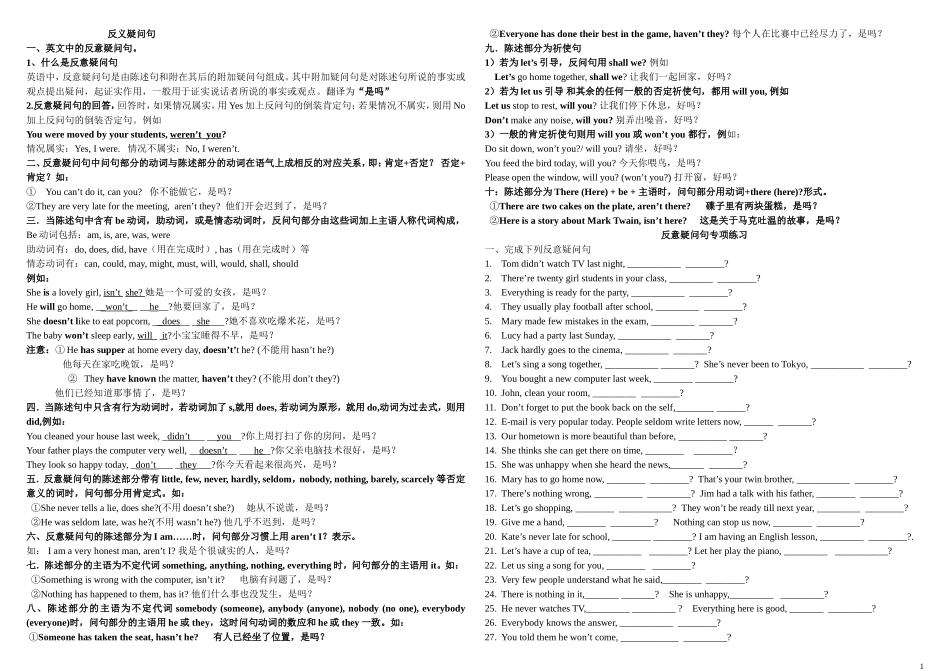反义疑问句一、英文中的反意疑问句。1、什么是反意疑问句英语中,反意疑问句是由陈述句和附在其后的附加疑问句组成。其中附加疑问句是对陈述句所说的事实或观点提出疑问,起证实作用,一般用于证实说话者所说的事实或观点。翻译为“是吗”2.反意疑问句的回答,回答时,如果情况属实,用 Yes 加上反问句的倒装肯定句;若果情况不属实,则用 No加上反问句的倒装否定句。例如You were moved by your students, weren’t you?情况属实:Yes, I were. 情况不属实:No, I weren’t.二、反意疑问句中问句部分的动词与陈述部分的动词在语气上成相反的对应关系,即:肯定+否定? 否定+肯定?如: ①You can’t do it, can you? 你不能做它,是吗?They are very late for the meeting, aren’t they? ②他们开会迟到了,是吗?三.当陈述句中含有 be 动词,助动词,或是情态动词时,反问句部分由这些词加上主语人称代词构成,Be 动词包括:am, is, are, was, were助动词有:do, does, did, have(用在完成时), has(用在完成时)等情态动词有:can, could, may, might, must, will, would, shall, should例如:She is a lovely girl, isn’t she? 她是一个可爱的女孩,是吗?He will go home, __won’t__ __he__?他要回家了,是吗?She doesn’t like to eat popcorn, __does__ _she___?她不喜欢吃爆米花,是吗?The baby won’t sleep early, will it?小宝宝睡得不早,是吗?注意:① He has supper at home every day, doesn’t’t he? (不能用 hasn’t he?) 他每天在家吃晚饭,是吗?② They have known the matter, haven’t they? (不能用 don’t they?) 他们已经知道那事情了,是吗?四.当陈述句中只含有行为动词时,若动词加了 s,就用 does, 若动词为原形,就用 do,动词为过去式,则用did,例如:You cleaned your house last week, _didn’t___ __you__?你上周打扫了你的房间,是吗?Your father plays the computer very well, __doesn’t__ ___he _?你父亲电脑技术很好,是吗?They look so happy today, _don’t ___ _they___?你今天看起来很高兴,是吗?五.反意疑问句的陈述部分带有 little, few, never, hardly, seldom,nobody, nothing, barely, scarcely 等否定意义的词时,问句部分用肯定式...

